Site-Wide Glossary
Site-Wide Glossary
Special | A | B | C | D | E | F | G | H | I | J | K | L | M | N | O | P | Q | R | S | T | U | V | W | X | Y | Z | ALL
G |
|---|
Grace and courtesyA specific area of learning that is often included in the Practical Life area of the Prepared Environment for young children. They are short lessons focused on positive social skills. For example, saying "please” and "thank you,” interrupting conversations politely, requesting rather than demanding assistance, and greeting guests warmly. | |
H |
|---|
Human TendenciesA term used by Montessori to describe innate predispositions, which drive human beings to interact with the external environment, and enable us to acquire human characteristics. They are observable in human beings throughout their life - regardless of the time or culture in which they were born. The Human Tendencies manifest as behaviours which enable the child to engage in experimental interactions with environment for their own self-construction and development. Maria Montessori identified a number of Human Tendencies, including:
| |
I |
|---|
Independence
Normal developmental milestones such as weaning, walking, talking, etc. mark points at which young children achieve greater levels of independence, autonomy and self-regulation. Throughout the four planes of development, children and young adults continuously seek to greater and greater levels of independence until they reach the point of complete dependence - "maturity”. It is as if the child says, "Help me to help myself.” | |
K |
|---|
Knowledge outcomesA type of learning outcome specific to a Montessori Professional Learning Series course. It is a specific list of what students should know by the end of the course or module. | ||
L |
|---|
Learning outcome statementA type of learning outcome specific to a Montessori Professional Learning Series course. These are statements that summarise what students are expected to know and to be able to do by the end of the course or module. | ||
N |
|---|
Nido
| |
P |
|---|
Participation StreamOne of two enrolment types in a Montessori Professional Learning Series course. Students work through all learning activities of a module with the aim of gaining a deeper understanding of Montessori theory and practice in early childhood education and care settings. Students are not required to complete the assessment items. Upon exit, students are awarded a Certificate of Participation. The other type of enrolment is the Certification Stream. | |
Practical life
It includes activities that promote:
Practical life activities are not only of great interest to young children. they also help them to work independently, develop concentration, and prepare for later work with reading and maths. | |
Prepared environment
The environment is prepared with a focus on order and reality, beauty and simplicity. A trained adult and a large enough group of children of mixed ages make up a vital part of the prepared environment. | |

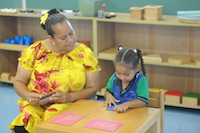 The label used by Montessori for the lead teacher in a Montessori classroom.
The label used by Montessori for the lead teacher in a Montessori classroom. 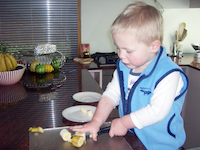 Is a common term, used to describe a state in which an individual does not need to depend on another.
Is a common term, used to describe a state in which an individual does not need to depend on another.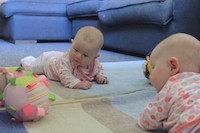 (In Italian: "Nest”). The name often given to a classroom specifically prepared for infants between 2 - 14 months of age.
(In Italian: "Nest”). The name often given to a classroom specifically prepared for infants between 2 - 14 months of age.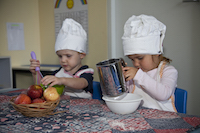 A core learning area in a Montessori
A core learning area in a Montessori 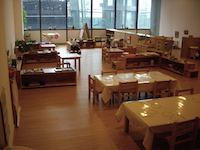 The Montessori classroom is an environment prepared by the adult for children. All aspects of the environment are carefully selected, thoughtfully arranged and sequentially presented to match the developmental needs of the children using the space. Everything is child-sized to encourage children to do things independently.
The Montessori classroom is an environment prepared by the adult for children. All aspects of the environment are carefully selected, thoughtfully arranged and sequentially presented to match the developmental needs of the children using the space. Everything is child-sized to encourage children to do things independently.